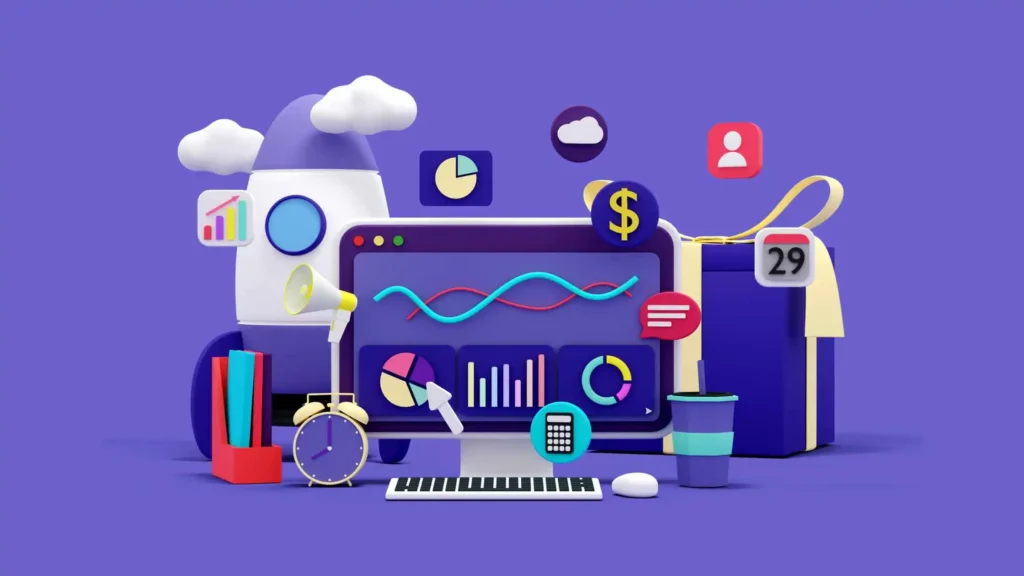Do you want to discover the incredible capabilities of Power Query in Microsoft Power BI? If yes, You are lucky! The time has come to make it happen!
In today’s data-driven world, organizations of all sizes constantly seek ways to derive valuable insights from their data.
One tool that has revolutionized how data is transformed and analyzed is Power Query in Microsoft Power BI.
With its user-friendly interface and robust functionality, Power Query empowers users to effortlessly connect to various data sources, transform data, and create insightful visualizations.
So in this article, we will dive deep into Power Query, exploring its features, benefits, and real-world applications.

Power Query in Microsoft Power BI: Understanding the Fundamentals
Before we embark on our journey exploring the vast capabilities of Power Query, let’s first gain a solid understanding of what it entails.
Power Query is a data transformation and preparation tool integrated into Microsoft Power BI, a leading business intelligence and analytics platform.
It allows users to connect to various data sources, such as databases, spreadsheets, cloud services, and web pages, and extract, transform, and load the data into Power BI for further analysis.
Are there any limitations to consider when using Power Query?
While Power Query is a powerful tool, there are a few limitations to remember.
Firstly, the performance of Power Query transformations may be affected by the size and complexity of the data.
Large datasets or complex transformations may require additional optimizations.
Additionally, certain data sources may have specific limitations or require particular drivers for connectivity.
It’s always recommended to refer to the official documentation or community resources for any limitations related to your specific use case.
Why Choose Power Query in Microsoft Power BI?
Power Query in Microsoft Power BI stands out regarding data transformation and analysis.
Here are some compelling reasons why you should choose Power Query as your go-to tool:
Seamless Data Connectivity:
Power Query provides seamless connectivity to many data sources, enabling you to extract data from multiple systems and consolidate it in one place for analysis.
Whether your data resides in an Excel file, a SQL database, or a cloud service like Azure, Power Query has covered you.
Intuitive User Interface:
Power Query boasts an intuitive user interface that is easy to navigate, even for non-technical users.
It’s drag-and-drop functionality and visual interface make data transformation a breeze.
Data Cleansing and Transformation:
With Power Query, you can easily clean and transform your data, removing duplicates, filtering rows, merging tables, and performing complex calculations.
It empowers you to shape your data to meet your requirements, ensuring accurate and reliable insights.
Automation and Refresh:
Power Query enables you to automate data transformation processes and schedule regular data refreshes.
This ensures that your reports and dashboards always reflect the most up-to-date information, saving you time and effort.
Extensibility:
Power Query is highly extensible, allowing you to create custom functions and reusable queries.
You can leverage the vast Power Query community to share and benefit from a wide range of pre-built queries, enhancing your data analysis capabilities.
Can I share Power Query queries with others?
Yes, you can share Power Query queries with others. Power Query queries can be exported and imported, allowing you to share your data transformation logic with colleagues or the broader Power Query community.
This promotes collaboration and enables others to benefit from your expertise.
Getting Started with Power Query in Microsoft Power BI
Now that we have a solid understanding of the benefits of Power Query let’s dive into the practical aspects.
This section will explore how to start with Power Query in Microsoft Power BI, from connecting data sources to performing fundamental transformations.
Connecting to Data Sources
To harness the power of Power Query, the first step is to connect to your desired data sources.
Power Query offers many options for data connectivity, ensuring you can access data from various systems seamlessly.
Some of the most commonly used data sources in Power Query include:
- Excel files
- CSV files
- SQL databases (e.g., Microsoft SQL Server, MySQL)
- SharePoint lists
- Web pages
- Azure services (e.g., Azure SQL Database, Azure Data Lake Storage)
To connect to a data source, follow these steps:
- Launch Microsoft Power BI and open a new or existing report.
- Navigate to the “Home” tab and click the “Get Data” button.
- A dialog box will appear, displaying a list of available data sources. Choose the desired data source and click “Connect.”
- Provide the necessary credentials and parameters to establish the connection.
- Once connected, you can preview the data and choose the tables or entities you want to import into Power BI.
Does Power Query support data refresh from multiple sources?
Absolutely! Power Query supports data refresh from multiple sources. Once you have defined the data connections and transformation steps, you can schedule data refreshes to ensure your reports and dashboards are always up to date.
Power Query provides options to refresh data from local files, databases, cloud services, and more.
Performing Basic Data Transformations
Once you have connected to a data source and imported the desired tables or entities, it’s time to perform fundamental data transformations.
Power Query provides many transformation options, allowing you to shape your data according to your analysis requirements.
Let’s explore some standard data transformation techniques:
- Filtering Rows: You can filter rows based on specific criteria to focus on relevant data. For example, you can filter out sales records older than a particular date or exclude rows with missing values.
- Removing Duplicates: Duplicate records can skew your analysis results. Power Query makes it easy to remove duplicates and ensure data integrity.
- Merging Tables: When working with multiple data sources, you may need to connect tables based on standard columns. Power Query offers various merge options, such as inner join, left outer join, and full outer join, to combine data from different tables.
- Splitting Columns: Sometimes, a column may contain multiple pieces of information that need to be separated. Power Query allows you to split columns based on delimiters or fixed positions.
- Adding Custom Columns: Power Query enables you to add calculated columns based on existing data. You can perform mathematical calculations, apply conditional logic, or concatenate text values to create custom columns.
- Pivoting and Unpivoting: Pivoting and unpivoting are valuable techniques for transforming data from a wide to a tall format and vice versa. Power Query provides intuitive options to pivot or unpivot columns per your analysis requirements.
These are just a few examples of the powerful transformations you can perform with Power Query.
The possibilities are endless, and you can combine multiple transformations to create sophisticated data pipelines.
Can I use Power Query in Excel as well?
Yes, Power Query is available in Excel as an add-in. It provides similar data transformation capabilities, allowing you to connect to various data sources, shapes the data, and load it into Excel for analysis.
The Power Query user interface in Excel is slightly different but shares many similarities with Power Query in Power BI.
Conclusion
Power Query in Microsoft Power BI is a game-changer regarding data transformation and analysis.
Its seamless data connectivity, intuitive user interface, and robust transformation capabilities make it an indispensable tool for any data professional.
By harnessing the power of Power Query, you can extract valuable insights from your data, automate processes, and confidently make data-driven decisions.
So, don’t wait any longer—unlock the true potential of your data with Power Query in Microsoft Power BI!
More resources you may find helpful
- The Difference between Power BI Desktop and Power BI Service
- How to Create Custom Visualizations in Microsoft Power BI
- Unlocking the Power of Data Modeling in Microsoft Power BI
- Best Practices for Designing Effective Reports in Microsoft Power BI
- Here’s How to Use Microsoft Power BI for Business Intelligence











